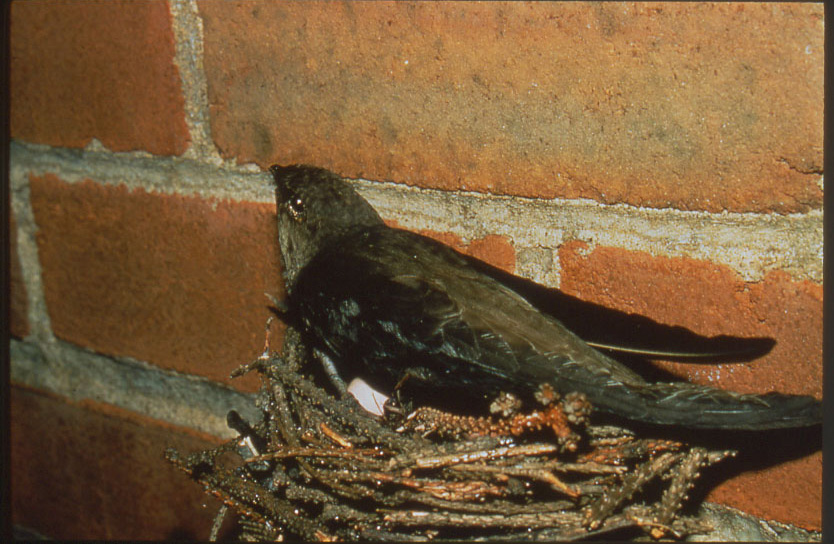MCSI CANADA DAY BLOG – JULY 1, 2022 EDITION

Canada Day is a special day to reflect on our past, assess the present, and chart a future path. Hopefully, the celebration of our country’s natural history is never taken for granted and certainly never confined to one official day. By contributing to conservation efforts on an ongoing basis, we help ensure the rich biological diversity of our country persists. With that in mind, let’s take a quick peek at how the breeding Chimney Swifts are progressing at their nest sites in St Adolphe…using that information as a template should support your future monitoring efforts elsewhere.
The cadence of this spring has been difficult. The Chimney Swifts are still dealing with unstable weather conditions – cold nights below 8 C, strong daytime winds, and yet more heavy rain storms. No inflexion point has been seen for the full-on arrival of stable “summer” weather. By Canada Day, I am usually watching for signs of hatching as nest sites have been trending to early July hatching and late July fledging. However, in 2022, I am focusing on tracking sites to see if incubation has any traction.
Incubation is the toughest nesting stage to pin down with respect to the date of onset. Start dates are nearly impossible to establish unless you have a nest cam or viewing port inside a tower etc. But it is possible to identify if the Chimney Swifts are incubating by using monitoring data. In ascending order of good, better, and best, I use 3 criteria which usually indicate that Chimney Swifts are on eggs. For monitoring sessions of at least 60 minutes, signs of incubation are: 1. % attendance, or time spent in the chimney, is > 50%; 2. A duration-in interval <10 min. (for an entry where a partner is not obviously flying nearby and doesn’t enter); and/or 3. A classic incubation exchange i.e., an entry followed by an exit 30-120 sec. later. Classic incubation exchanges take place 1 X hour (give or take a few minutes) at a site with 2 breeding adults.

In an earlier blog we talked about the arrival and nest building stages of nesting. Pairs of Chimney Swifts could be seen flying together with wings stretched upright in their “V” displays; birds could be seen stalling at dead branch ends or hitting on small twigs; pairs often approached nest sites together but the trailing bird could fly off after the leading partner entered. After a few minutes, the partner would enter the nest site and both birds would leave together. As incubation becomes established, single birds will approach and enter, and single birds will depart the nest sites.
To give you an idea of how breeding activity has been progressing in St Adolphe recently, here is a string of annotated monitoring data from the two Club Amical nest sites:
Club Amical Mon. June 20th (75 min session):
SE Club: entry at 11:32; entry at 11:38; 2 swifts exit together at 11:51; entry at 12:04; entry at12:11; pair leaves together at 12:31. Attendance = 61% which is above the 50% criterion threshold – this indicates incubation in progress.
NE Club: entry at 11:41; exit at 11:56. Attendance = 20% unless the partner was in the chimney! Based on the activity seen, incubation is not likely in progress.
Club Amical Wed. June 22nd (90 min session):
SE Club: entry at 9:09; exit at 9:19; entry 9:24; exit at 9:43; entry at 9:43:27; exit at 9:50; entry at 10:36; entry at 10:39:00; entry at 10:39:11 = 3 IN. NB: with a helper identified, the activity rates and patterns of use are not easily compared to other sites where 2 breeding adults are present.
NE Club: exit at 9:18; entry at 9:27; entry at 10:29:48; exit at 10:30:34 = CLASSIC INCUBATION EXCHANGE, the first seen this year! The site is likely unattended from 9:18 to 9:27 (10% unattended). Incubation is indicated.
Club Amical Sat. June 25th (90 min. session):
SE CLUB: entry at 12:55; entry at 1:10 compare to circling bird on June 20th = same style – maybe key to i.d. individual? 2 birds exit together at 1:17. Attendance ~24% would NOT indicate incubation. Compare with June 20th = flip flop of status.
NE CLUB: exit at 12:08; entry at 12:52. Behaviour observations indicate partner in air at time of exit at 12:08. Attendance ~51% which supports incubation is occurring.
Club Amical Wed. June 29th (90 min. session; start at 9:40 AM, end at 11:10 AM):
SE CLUB: entry at 9:58 (pair approaches the chimney, the lead bird enters while the trailing bird departs the area); exit at 10:24; entry at 11:13 (approach by a single bird). NB: a 2 + 1 pattern = pair approach, both enter and both exit together, then a single bird approaches, enters and then exits, may reflect that a helper is on site. The cadence/frequency of entries/exits at a helper-based nest site is different compared to a nest site without a helper being present. This pattern may be picked up on during frequent, long monitoring sessions, particularly when young are being fed. For this session, ~33% attendance does not indicate incubation but again, all is different at a site with a helper, so who’s in there anyway?
NE CLUB: entry at 9:43:33; exit at 9:44:54 = CLASSIC INCUBATON EXCHANGE, comparable to June 22nd. Entry at 10:47; ~62 min. between-visit; 1 in chimney at end of session with a duration-in interval = 23 min. NB: it is worth noting that if two different 60 min. blocks were used to compare data, the assessment of stage of nesting would differ! For the first block of time (9:40-10:40), only the classic incubation exchange would be captured = incubation indicated; in the second block (10:10-11:10), shifted 30 minutes after start time, no classic incubation exchange would have been seen and a duration-in interval of 23 min. would yield an attendance rate of 38% = no incubation indicated. This leads back to the point that many, long sessions are required to really understand what is happening at a nest site – especially in the early days of incubation! After hatching, activity increases and becomes more predictable. Frequent feeding must take place or the young will die!
Here’s the summary for the other St Adolphe nest sites:
Brodeur Bros./Daycare = incubation is underway; 73% attendance on June 23; classic incubation exchange seen on June 27.
Church = approaching incubation; ~33% attendance on June 23 and ~48% attendance on June 26.
Main St = may be close to incubation; ~46% attendance on June 23 but only 25% attendance on June 27 which was a poor feeding day – no local feeding activity was observed.
The clock is ticking…Chimney Swifts do not have an open-ended breeding season. Fledglings must be out of the chimney in advance of migration so they can develop flight proficiency. By mid-August, Manitoba Chimney Swifts typically assemble in pre-migratory groups before migrating south to the wintering grounds. They must move ahead of an impoverished food supply. Our Chimney Swifts are gone well before birds leave from more southern latitudes. In London, ON, our colleague Winnie Wake may see Chimney Swifts through to the end of September!
So, what are the important dates for incubation to start in Manitoba in order to meet those season-ender constraints? We have to work backwards on this calculation.
- Aug. 16th is the latest successful fledging date for a breeding attempt in St Adolphe (Brodeur Bros., 2010). Let’s figure out incubation starts that make the Aug. 16th deadline…
- We need to factor in two stages of nesting: the known range of incubation (18-21 days; rarely 16 days) and the typical range of feeding before fledging occurs (28-30 days). Remember that Hatching Day = Day 1 of Feeding!
- Using the maximum length of incubation = 21 days, and the maximum known length of feeding young before fledging = 30 days, the incubation start date = June 28. Hatching = July 18th, then fledging would follow on Aug. 16th.
- Using the minimum length of incubation = 18 days and the minimum known length of feeding young before fledging = 28 days, the incubation start date = July 3. Hatching = July 20th and fledging would take place Aug. 16th.
- To summarize, for Aug. 16th fledging, incubation would likely need to start between June 28 to July 3. Have you checked the calendar today?
So, how do you know hatching has taken place? Hatching will be telegraphed by an increase of entry/exit events to a rate of ~2-3 X hour for 6-7 days as brooded young are fed. After the young can regulate their own temperatures, both adults may leave the nest site to forage. Feeding rates for non-brooded young rise to ~4 X hour but higher rates of ~6-7 X hour are seen when a big juicy patch of insects is available locally. If 1 helper is onsite, feeding rates typically are up to ~2 times higher than at a site where only the 2 breeding adults are tending their offspring. Check out last year’s blog, Diary of a Helper, for more details: https://www.mbchimneyswift.com/st-adolphe-in-2021-and-more/
Tracking Chimney Swifts at nest sites is a complex activity. These birds do not live by static textbook formulae – their dynamic lives are driven by changing weather conditions and food availability etc. over the breeding season. Think of your monitoring efforts as capturing pieces of a complex and shape-shifting puzzle, a puzzle of big blue sky with Chimney Swifts scattered about. Sometimes birds are feeding apart, sometimes they are flying close together with pair bond “V” displays. Sometimes birds are hitting dead branch ends. Some swifts may have zippy single entries/exits. Some are goofy, slow fliers which have trouble dropping into nest sites, thereby telegraphing fledglings in their early flight training days post-fledging. Along the way your monitoring sessions will add puzzle pieces to the overall picture. Infrequent, short sessions gather puzzle pieces with snippets of information; these are very good for verification of site use. Frequent, lengthy sessions harvest more robust puzzle pieces that have more information in them; these are necessary for identifying stages of nesting.

Let us know what your Chimney Swifts are doing at their nest sites. Do what you can, when you can, and keep flying those monitoring reports over to us at MCSI. We always appreciate your input and the Chimney Swifts will be well served by your involvement! Knowledge is a powerful currency. Together, we can continue to apply our knowledge to support Chimney Swifts living in Manitoba.
Oh, and be prepared to wonder sometimes if your puzzle piece is a flyaway belonging to another picture altogether. Head scratchers do happen. The challenge of decoding swift behaviour may take a rear-view mirror at season’s end. Let’s hope the rest of the breeding season plays out in a manageable fashion – for the Chimney Swifts and for all of us monitors!
–Happy Swifting in the days to come, Barb.
